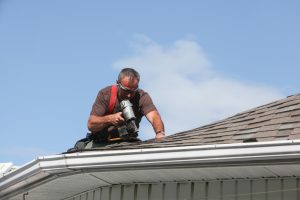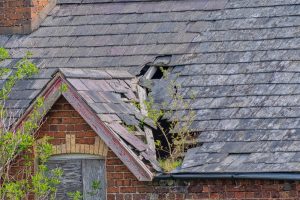For more information on any of the services offered by High Class Roofing or a free no obligation quotation, please complete the following form or call us on 0405 229 765.
Which Factors Influence The Cost Of Roof Restoration?

Keeping your home safe and secure starts with a strong, reliable roof. Over time, however, even the most resilient roofs can succumb to wear and tear, requiring restoration. But before you dive into a restoration project, it’s natural to wonder about the cost. Here’s a breakdown of the key factors that influence the cost of roof restoration in Sydney.
What are the key factors impacting the cost of roof restoration?
Several factors come into play when determining the cost of roof restoration. Let’s explore the main ones:
- Age and condition of the roof: An older roof with significant wear and tear will likely require more extensive repairs, pushing the cost upwards. Conversely, a newer roof might only need minor fixes, resulting in a lower overall cost.
- Size and complexity of the roof structure: The size of your roof, measured in square metres, directly affects the amount of materials and labour needed. Complex roof designs with multiple slopes, valleys, or chimneys will also cost more to restore due to the increased difficulty of working on them.
- Materials used for restoration: The type of material you choose for restoration significantly impacts the cost. Asphalt shingles are a budget-friendly option, while metal roofs or terracotta tiles come at a premium price point. Consider factors like durability, longevity, and your desired aesthetic when making your choice.
- Degree of damage and repairs needed: The extent of damage to your roof will heavily influence the restoration cost. Minor repairs like fixing a few loose shingles are less expensive than addressing widespread leaks, rot, or structural issues.
- Local labour and material costs: Labour rates and material availability can vary depending on your location. Urban areas might have higher labour costs compared to regional areas. Similarly, the cost of specific roofing materials can fluctuate based on local supply and demand.
How does the roofing material affect the cost of restoration?
The type of roofing material you choose for restoration is a major cost influencer. Here’s a quick comparison:
- Asphalt shingles: A popular and affordable option, asphalt shingles are relatively easy and inexpensive to restore.
- Metal roofing: Known for its durability and longevity, metal roofing can be more expensive to restore due to the material cost and specialised techniques required.
- Concrete tiles: While beautiful and long-lasting, concrete tiles are expensive to restore because of their weight and potential need for structural reinforcement.
- Terracotta tiles: Similar to concrete tiles, terracotta offers an elegant aesthetic but comes with a higher restoration cost due to the material’s weight and potential breakage during repairs.
Cost variation based on material durability and longevity: Remember, while some materials might be pricier to restore initially, their extended lifespan can save you money in the long run compared to frequently replacing less durable materials.
How does the size and complexity of your roof affect restoration costs?
The size of your roof directly correlates to the amount of materials and labour required for restoration. A larger roof will naturally cost more to restore than a smaller one. Here’s a breakdown:

- Calculating restoration costs based on roof square footage: Roofers often use a measurement called “roof squares” to estimate material needs. One square equals ten square metres of roof area. The total number of squares multiplied by the cost per square metre of your chosen material gives you a rough estimate of the material cost.
- Additional costs for complex roof designs or structures: Roofs with multiple slopes, valleys, or chimneys require more planning and specialised techniques to work on safely. This complexity can translate to higher labour costs during restoration.
How do local labour and material costs influence the overall cost of roof restoration?
The cost of roof restoration can also vary depending on your location:
- Regional variations in labour rates: Labour rates can vary across different regions in Australia. Urban areas might have higher labour costs compared to regional areas.

- Availability and cost of roofing materials in your area: The availability and cost of specific roofing materials can fluctuate based on local supply and demand. Getting quotes from local roofers will give you a clearer picture of material costs in your area.
What role does the degree of damage play in determining restoration costs?
The extent of damage to your roof is a significant factor influencing the cost. Here’s how it impacts the project:
- Assessing the extent of damage: A thorough inspection by a qualified roofer is crucial to determine the full extent of the damage. This includes identifying leaks, assessing the condition of flashing, and checking for signs of rot or structural issues.
- Impact of pre-existing issues on restoration costs: Existing problems like water damage, mould growth, or structural deterioration require additional repairs before restoration can begin. These add-on repairs can significantly increase the overall cost.
Can regular maintenance reduce the cost of roof restoration?
Absolutely! Regular inspections and maintenance can significantly reduce the cost of roof restoration in the long run. Here’s how:
- By scheduling regular roof maintenance, you can identify minor issues like missing shingles, loose tiles, or clogged gutters before they escalate into major problems. Addressing these small issues promptly prevents them from causing water damage, rot, or structural problems, which are much more expensive to fix during restoration.
- Think of preventive maintenance as an investment in your roof’s health. Taking care of minor problems early on can extend the lifespan of your roof and potentially delay the need for a full restoration, saving you thousands of dollars in the long run.
Are there any additional factors that might impact the cost of roof restoration?
While the factors mentioned above are the most significant, a few other things can influence the cost:

- Extreme weather conditions can affect the cost of restoration. Roofers might charge more during peak seasons like spring or autumn when demand is high.
- Hiring a reputable and experienced roofer is crucial for a high-quality restoration project. Experienced professionals might charge slightly more, but their expertise ensures a job well done, potentially saving you money on repairs down the line.
- If your roof damage is caused by a storm or other insured event, your insurance policy might cover a portion of the restoration cost. However, navigating the insurance claim process can be complex, so consulting with your insurance provider is recommended.
Remember, understanding these factors can help you make informed decisions about your roof restoration project and potentially save you money in the long run.
Conclusion
Investing in roof restoration protects your home, improves its curb appeal, and increases its value. By considering the factors discussed above, you can approach your restoration project with a clear understanding of the potential costs involved. Don’t hesitate to get quotes from multiple qualified roofers in your area to compare prices and find the best value for your needs.
Ready to give your roof the TLC it deserves? Contact High Class Roofing today for a free roof inspection and no-obligation quote. Our experienced and certified team will assess your roof’s condition and recommend the best course of action to restore its strength and beauty. We use high-quality materials and cutting-edge techniques to ensure a long-lasting, leak-proof roof that protects your home for years to come.

